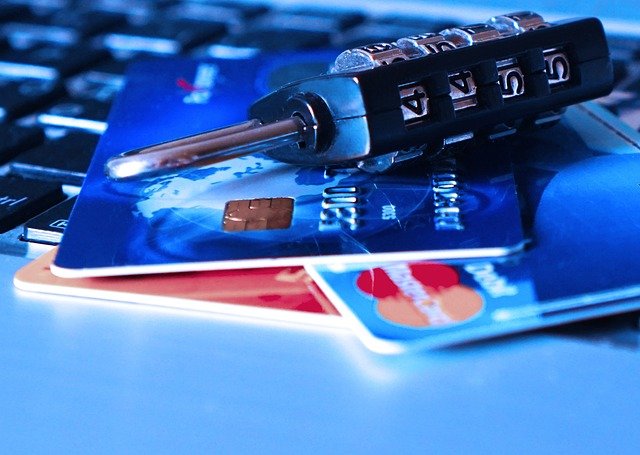Protecting Personal Data When Shopping Online Worldwide
Protecting personal data when shopping online requires a mix of practical habits and awareness of how merchants, payment systems, and delivery partners handle information. This article explains key steps to reduce data exposure, what to check on product pages and checkout, and how privacy tools and choices about payments, shipping, and returns can lower risk across borders.

Protecting Personal Data When Shopping Online Worldwide
Online shopping connects buyers and sellers across countries, but it also creates many points where personal data can be collected, shared, or exposed. Protecting your information starts with understanding how platforms use details for deals, sales, discounts, pricing, currency conversion, tracking, and fulfillment. The advice below focuses on practical steps for secure payments, limiting tracking, handling returns or resale of items, and verifying authenticity and warranty information while respecting sustainability and value considerations.
How does security protect my personal data?
Security begins with the merchant and the device you use. Look for HTTPS on checkout pages and avoid public Wi‑Fi when completing payments. Keep browsers and operating systems updated, enable built‑in protections like phishing and malware filters, and use reputable password managers to create unique credentials. Security extends to how retailers store data: check privacy policies for data retention, third‑party sharing (for marketing deals or resale platforms), and whether the site offers account‑level protections such as two‑factor authentication.
Are payments and payment methods safe for international purchases?
Payments are often the most sensitive step. Use well‑known payment processors or card networks that offer buyer protections and fraud monitoring. Virtual cards, one‑time card numbers, or trusted digital wallets reduce the exposure of your real card number when transacting across currency boundaries. Monitor card statements for unexpected fees related to currency conversion or cross‑border processing. When considering discounts or flash sales, be cautious with unfamiliar checkout flows that request extra personal or financial details beyond what is needed to complete the purchase.
How is tracking used and how can I limit it?
Tracking is common for personalized deals and targeted sales, but it also increases profiling risk. Trackers can follow you across merchant sites, advertising networks, and resale marketplaces. Use browser privacy settings, content blockers, or privacy‑focused browsers to limit third‑party cookies and trackers. Consider adjusting ad personalization settings in major platforms and review cookie consent choices on merchant sites to restrict unnecessary data collection tied to discounts and marketing analytics.
What should I consider about returns, resale, and warranty?
Returns and resale create additional data touchpoints: return labels, refund receipts, and resale listings often include order numbers or partial personal details. When reselling, remove serial numbers and personal marks from images, and redact sensitive documentation. Check warranty terms for required personal details and how long they are retained. If sustainability or warranty transfers matter for value, verify whether the seller needs identity proof and whether that information will be stored or shared.
How to protect data during shipping and delivery?
Shipping exposes address, contact, and tracking details. Use delivery options that minimize public visibility of your address (parcel lockers, secure pickup points). For international shipments, customs forms may require additional personal data—confirm what is necessary and whether minimal descriptions can be used consistent with regulations. Track packages with official carrier portals rather than public social posts, and avoid sharing tracking links that reveal your address or order specifics on social platforms.
How do pricing and privacy tools compare in cost and effectiveness?
Investing in privacy tools can improve data protection while shopping globally. Choices include VPNs to secure connections, password managers for unique credentials, and paid fraud monitoring for cards. Below is a short comparison of common VPN subscription options as an example of privacy tools often used during cross‑border shopping. These providers are widely available and represent realistic cost examples for protective measures.
| Product/Service | Provider | Cost Estimation |
|---|---|---|
| VPN subscription (long-term) | NordVPN | Approx. $3–5 per month (annual/long-term plans) |
| VPN subscription (monthly) | ExpressVPN | Approx. $6–12 per month (short-term pricing) |
| VPN subscription (tiered) | ProtonVPN | Free tier available; paid plans approx. $5–10 per month |
Prices, rates, or cost estimates mentioned in this article are based on the latest available information but may change over time. Independent research is advised before making financial decisions.
Conclusion
Protecting personal data while shopping online worldwide is a balance of careful vendor selection, secure payment choices, and limiting unnecessary data sharing during tracking, shipping, returns, or resale. Practical steps—using secure networks, privacy tools, unique passwords, and mindful sharing—can reduce exposure without sacrificing value from sales, deals, or discounts. Regularly review account privacy settings and documentation like warranty and return policies to ensure your information is handled according to your expectations and local regulations.





